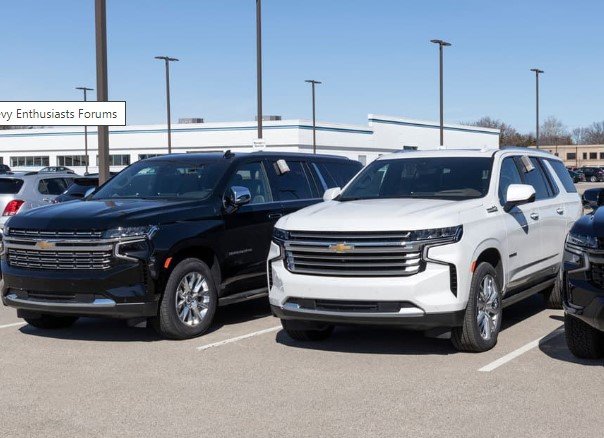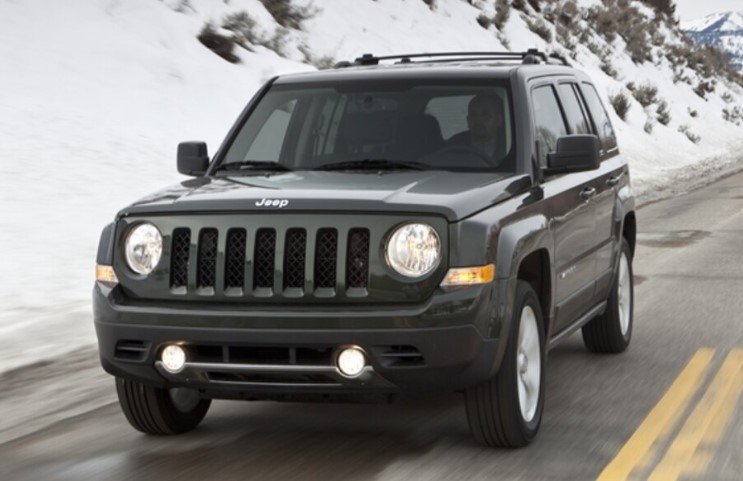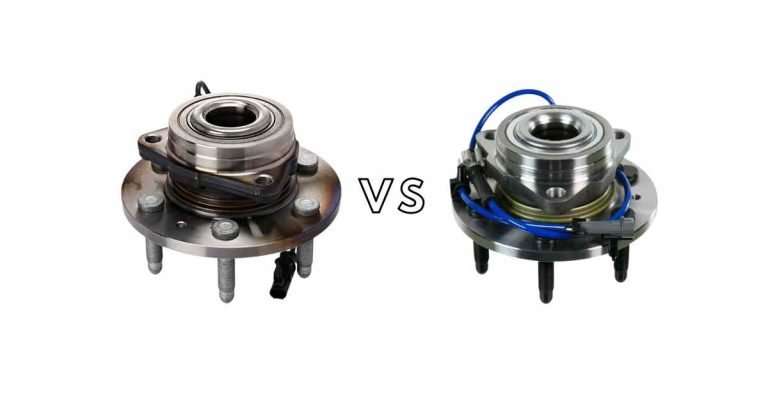Chevrolet Suburban 1500 vs 2500: Comparison and Differences
Deciding between two vehicles can be confusing, especially if they are versions of the same model. This scenario is common to people choosing between Chevrolet Suburban 1500 and 2500. But how do they compare?
For one, the two SUVs are great at towing, with capacities of over 8,000 lbs. However, the Suburban 2500 is more of a workhorse with 6.0L engines, which gives it 352 horsepower. On the other hand, the Suburban 1500 has 5.3L, which, while it’s not as strong as 2500’s, gets better mpg.
Multiple factors can help you differentiate the two SUVs from each other, all covered in the article, so read on.
Chevrolet Suburban 1500 vs 2500 Specs
The following table contains several specs to help you tell the two vehicles apart. The specs are for the 2013 Suburban, LS 4×4 trim for both 1,500 and 2,500. The specs are from Autoblog.
| Specs | Suburban 1500 | Suburban 2500 |
| Engine | 5.3L V-8 | 6.0L V-8 |
| Horsepower | 320 hp | 352 hp |
| Transmission | 6-speed auto w/OD | 6 speed auto w/OD |
| Torque | 355 Lb. – Ft | 382 Lb.-Ft. |
| Curb Weight | 5,820 lbs. | 6,419 lbs. |
| Mileage | 17 mpg combined | 13 mpg combined |
| Cost MSRP | $46,715 | $48,320 |
| Payload | 1,580 lbs. | 2,181 lbs. |
| Towing Capacity | 8,000 lbs. | 9,400 lbs. |
| Design and Look | SUV | SUV |
| Safety and Handling | ABS | ABS |
| Front, side, and overhead airbags | Front, side, and overhead airbags | |
| Additional Features | polished aluminum wheels | 6-speed auto w/OD |
Chevrolet Suburban 1500 vs 2500: Similarities
The Suburban 1500 and 2500 are SUVs made by the Chevrolet division of general motors. The two were built on the GMT830 platform, found in the ninth and the tenth generation between 2000 and 2015.
The two models had a lot of new features, like the four-wheel disc brakes and ABS. Chevrolet made the two to provide customers with an option between light and heavy duty. The 2009 suburban was ranked third among J.D. Power dependability contenders.
Both vehicles have several similarities, like the carrying capacity, where both can carry up to 8 passengers. They are also fitted with a 6-speed automatic transmission and are available with rear and four-wheel drive.
However, several features set the two versions apart, one of which is the Quadrasteer system, available on some Suburban 2500 models. More of their differences are covered in the following section.
Differences Between Suburban 1500 and 2500: Side-By-Side Comparison
The Suburban 1500 and 2500 have more differences than similarities, especially in drivetrain and capabilities. However, the major differences are in what their names represent.
The Suburban 1500 represents the light-duty version, which is half a ton. On the other hand, the Suburban 2500 represents the three-quarter-ton heavy-duty suburban version. Other differences include
- Physical differences
Other than the specs, some of the differences between the two versions of the suburban are visual. For instance, because of the higher suspensions used on the Suburban 2500, this SUV appears more raised than the Suburban 1500.
Also, the 2500 BURBs have an octagon cover, and their hubs are fully floating. However, this is not always a reliable differentiating factor, as 2500 BURP with a 350 gasser is the same as those of Suburban 1500.
2. Weight
The Suburban 2500 has a curb weight between 4,769 and 6,419 lbs. depending on the trim and the model year. The three-quarter tons are always the heavier of the two.
The curb weight of the Suburban 1500 is between 4,769 and 5,820 lbs. The half tons are lighter, which makes them ideal as a regular SUV.
3. Engine Performance
Various things affect the performance of a vehicle, including the drive train. Despite both using the V-8 engine, the Suburban 2500 has a 6.0L engine capable of producing 352 horsepower at 5400 rpm. This more horsepower and torque increases its towing reliability.

This Suburban 1500 has a Vortec 5.3L engine capable of 320 horsepower and 355-pound foot torque. While the performance is not as impressive as that of 2500, it’s an ideal option for off-road driving and regular towing plus heavy carrying.
4. Transmission
The transmission for the Suburban 2500 is Hydra-Matic 6L90 six speed automatic. The gear ratios of this gear match that of the transmission installed in the Suburban 1500. However, the final drive ratio for the transmission is 3.73, which is over 0.60 than the standard transmission in the 1500 series.
The Suburban 1500 is equipped with Hydra-Matic 6L80 six-speed automatic. This transmission gets 3.08 final drive ratio on the standard one, but an optional can get up to 3,42.
The final drive ratio affects towing, fuel economy and acceleration of a vehicle. The higher ratios have better towing and acceleration but get poor fuel economy.
5. Gas mileage
Despite the Suburban 2500’s powerful engine, its gas mileage is poor, with only 13 mpg combined, 11 in the city, and 16 highways. The gas mileage of the 1500 is 15 mph in the city, 21 on the highway, and 17 mpg combined.
I would prefer the 1500 for its better mileage since the towing capacity is not that much different. However, if you’re getting the vehicle specifically for towing purposes, get the Suburban 2500.
6. Braking and Safety
Safety equipment on the two models of the year 2012 are the same sharing almost every feature. Some of the notable features include a side blind zone and rear park assist.
The two Suburbans get four-wheel disc and four-wheel ABS types of brakes. However, the 2500 gets ABS with hydro boost, which is capable of greater pressure on the brakes improving brake performance. However, the rotor diameter and thickness of the two SUVs is the same.

7. Towing and Payload
Another difference between the two suburban SUVs is their towing capacity and payload. As expected, the three-quarter-ton can tow more and carry more.
The 2013 model Suburban 2500 has a payload of 2,181 lbs. and a maximum towing capacity of 9,400 lbs. 1500 has a payload capacity of 1,580 lbs. and a maximum towing capacity of 8,000 lbs., which is lower.
Which Should I Choose Between The Suburban 1500 and 2500?
While the two SUVs have advantages over each other, they might create uncertainty when deciding. However, there are various factors you can consider and be able to decide one over the other better.
- Towing Purposes
If you’re after a vehicle that has a higher towing capacity and is capable of carrying more load, then 2500 is your choice. The powerful engine and suspension ensure this SUV is up for the task and capable of towing more.
- Space
Consider 1500 if you’re after a spacious SUV that isn’t used mainly for towing. This SUV makes a great family or luxury vehicle and also has a decent towing capacity.
- Better Mileage
You can base your decision on the mileage and pick 1500, which is better. However, if you’re planning to tow a lot and frequently, its mileage can get worse than 2500. Therefore, you should buy 2500 instead in this case.
- Cost
Another factor you can consider when deciding between the Suburban 1500 and Suburban 2500 is the cost. If towing capabilities are not your concern, consider 1500, which costs at least $2000 less.

Conclusion
It’s undoubtedly that the two vehicles have great capabilities, especially when towing. However, they’re not the same and have some differences covered in the article. One of them is their different engine capacities, towing, and payload.
If you want an SUV fit for serious towing, the heavy-duty 2500 will do. However, keep an eye on the gas as its mileage is poor. However, if you’re looking for a regular SUV capable of towing, go for the lighter 1500.
Also Read:
A Closer Look At 1998 Chevy Blazer Problems: Troubleshooting Guide







